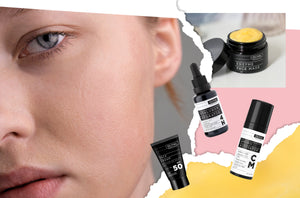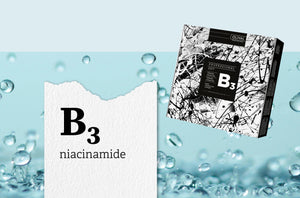Rosacea is a chronic skin condition that requires the attention of a dermatologist and sometimes certain prescribed therapy. The skin will be better and look better only when a comprehensive approach is applied, from nutrition to daily care, which must be well adapted. In all of this, the selection of active ingredients is important, and two stand out in particular - azeloglycine and CM Naringenin Chalcone - which will provide the skin with key effects.
Azelaic acid derivative is suitable for sensitive people
You've probably heard that azelaic acid is great for relieving the signs of rosacea. Many even get it prescribed by dermatologists, and in large percentages. Azelaic acid offers antibacterial, anti-inflammatory and keratoregulating properties, which makes it effective against acne, redness and blemishes. However, it is potentially drying and not so "elegant" for everyday use. On the other hand, that's why azeloglycine has become a must-have ingredient in rosacea skin care for a reason. It is a derivative, that is, a variation of azelaic acid that is much gentler and more tolerable on the skin compared to classic azelaic acid. It provides almost the same effects on the skin, so it has an antimicrobial effect, regulates the secretion of sebum, soothes the skin and helps to alleviate redness. No less important, azeloglycine is easier to combine in the routine with other ingredients, and due to the presence of glycine in the chemical structure, it additionally hydrates and strengthens the natural barrier function.

The innovative CM molecule is just coming into the focus of formulations
The topic of rosacea is inexhaustible, and the search for ingredients that will have a direct and targeted effect on the skin burdened by this chronic condition is still ongoing. Along the way, scientists have discovered that certain compounds from the peel of citrus fruits and tomatoes can really help and are beneficial in daily care. This is how they came to the discovery of a new, innovative molecule.
Carboxy-Methyl Naringenin Chalcone is an active ingredient obtained from a natural polyphenol (naringenin chalcone) that can be found in the peel of citrus fruits or tomatoes. It is a molecule with a proven strong anti-inflammatory effect, intended for targeted skin care with rosacea or generally sensitive skin prone to itching and redness. This active ingredient brings multiple proven effects. Before understanding the actual mechanism of action, it is important to know that rosacea means chronic inflammation of the skin.
This is also visible through specific phenomena in the body, for example the level of cathelicidin LL37. This peptide is one of the natural primary mechanisms of a kind of defense of the skin against stressors. However, in addition to signaling possible microbial activity in the skin and thereby "telling" it that it must defend itself, this peptide also stimulates the appearance of proinflammatory (inflammatory) substances such as cytokines and chemokines. This actually maintains the continuous inflammatory state characteristic of rosacea.
Together they are stronger - in a treatment cream for all occasions
By reducing the levels of cathelicin LL37, CM Naringenin Chalcone alleviates this inflammatory response of the skin and actually takes the whole rosacea treatment story to a new level, beyond the classic mitigation. It is important to know that research shows that CM Naringenin Chalcone significantly reduces capillary redness, protects and soothes stressed skin, and provides relief to itchy or irritated skin.
No less important, azeloglycine and CM Naringenin Chalcone work great - together. As part of the complete formulation, together with amino acids, sika extract and panthenol in the Amino Activator CM treatment cream, it will help soothe intolerant skin prone to irritation and redness. It will also provide ideal support during the use of retinoids and acids, but also in special moments such as the period of pregnancy, when the skin can be particularly sensitive.





